Can you tell us a little bit about yourself and what you do?
My name is Celina, I’m 25 years old and from Montclair, New Jersey. I’m a sculptor, performance artist, and costume designer, and I sell clothing under the label name ‘Social Call.’ I’m currently living and working in Brooklyn, NY with my cat, Rooney.
What are some recent, current, or upcoming projects you’re working on?
At the moment, I’m in the middle of making a little midsummer collection —part of which will be available through Cafe Forgot at Larrie Gallery for the month of August. And coming up I’m hoping to begin working on a collaborative project I’ve been planning for a while with my friend, Hannah Garner, from 2nd Best Dance Company.
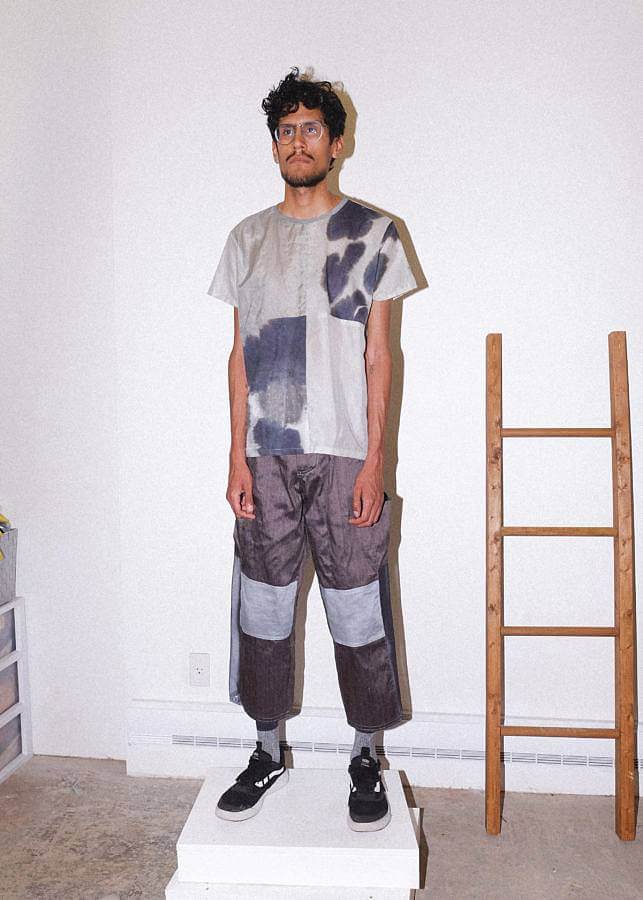

How did you become interested in making art, and specifically wearables?
My mom is an artist – art director turned classical oil painter – so I grew up with creativity and art-making as a relative constant in my life. For school it wasn’t ever really a question about whether I was going to pursue a BFA. I did end up switching programs a few times (college was a long winding road) but always had my focus on sculpture. I only started to move into wearables at my last school, SUNY Purchase, where the sculpture department allows for a lot freedom. I’d had an affinity for soft materials and making semi-narrative, theatrical work, so involving garments just felt like a natural progression for me. With the help of initial supporters like Showroom101 in Spain and Cafe Forgot in NYC, who both found my clothing via Instagram, things sort of took off from there.
What’s your process like?
In large part, it’s a lot of sitting and staring. A lot of thinking quietly, a lot of list making, and many many post-it notes. The actual making part, including the construction of garments, usually happens comparatively quickly. Even though the materiality and craftsmanship of my work is incredibly important to me, it often ends up becoming secondary in terms of how I actually spend my working hours. A month could potentially be broken down into two weeks of day-dreaming and note-taking (with some light googling), one week of heavy research and gathering materials, and one week of actual production.
What’s your studio or workspace like?
My current studio, in East New York, is still relatively new to me as I just moved in this past month. I’m really excited about it though — it’s a big, bright space and I’m settling in pretty quick. I always end up surrounding myself with a lot of books, tchotchkes, and somewhat excessive amounts of fabric and found materials. Looking through these things definitely helps get the ‘creative juices’ flowing, but I am trying to strike a balance in this new space to make it more practical for production. I just built out a desk from an old door which has been amazing to spread out all my many notebooks, print outs, and post-its; I also have a separate sewing table and cutting table, a drying rack for dyeing, and an open floor area for plaster/concrete work. It’s a bit difficult to have a messy sculptural practice in the same room as a clothing atelier, which requires a certain level of cleanliness, but I am making the separation work (there’s soon to be a large plastic curtain involved). Fortunately, there’s still room for the ubiquitous reading nook and knick-knack shelves!
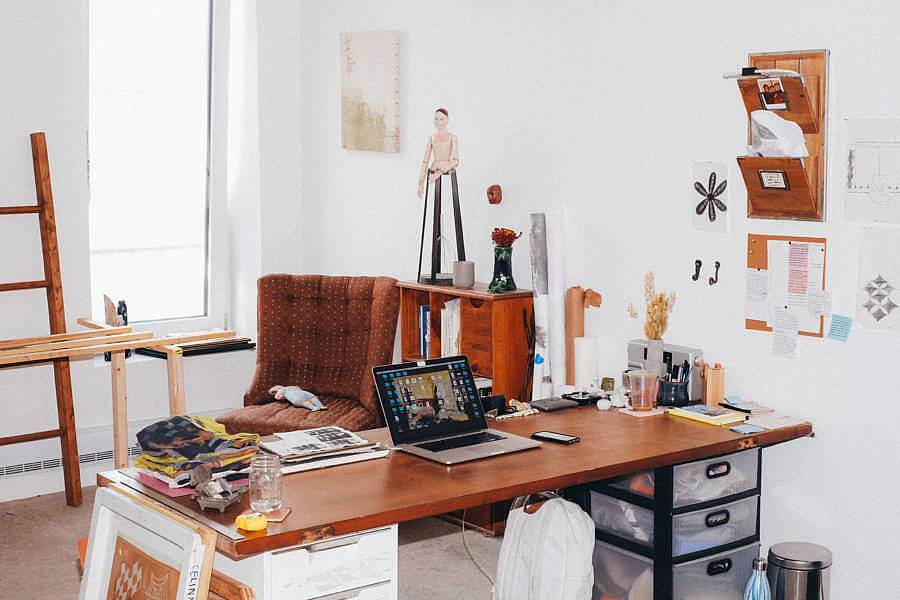
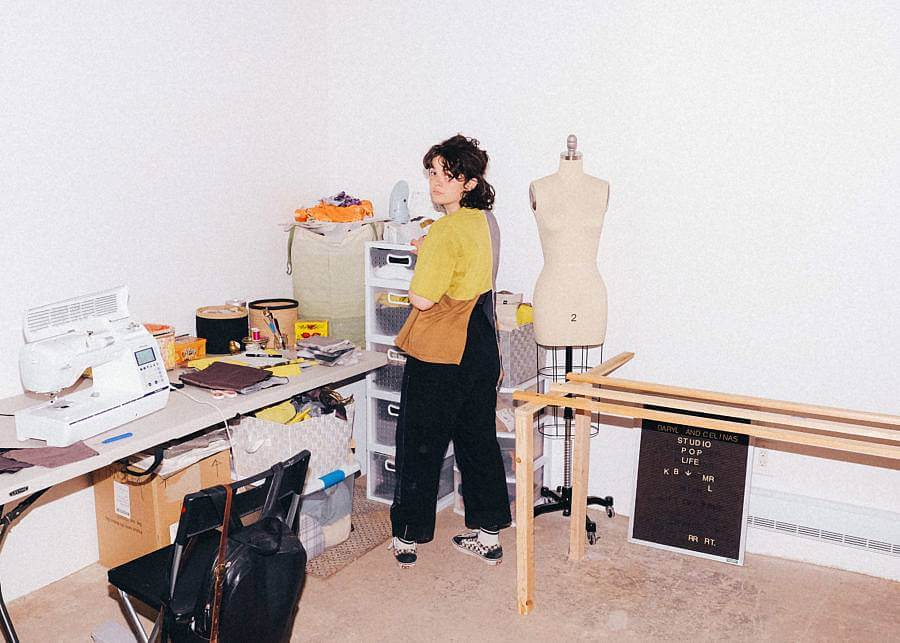
Fashion and clothing can be quite conceptual, or quite commercial. As a maker straddling these realms, how do you balance the two?
I think I’m still in the middle of figuring that out. It’s part of why I decided to create the Social Call label. It’s allowed me, in a simple way, to separate my conceptual performance-based work from my commercial ready-to-wear clothing. I don’t necessarily want to divide the two entirely, as I feel they are still connected — the conceptual feeds the commercial and vice versa — but I have wanted to more clearly delineate those sides of my practice, if only for myself. I’m trying to be easy with it and not think in terms of “high” or “low” fashion/art, as I feel the elitism in the creative world can be a bit poisoning. Contextual (read: branded) boundaries can be useful though when you have T-shirts and cargo pants on one end of a practice, and quilted ass-less chaps and plaster cowboy hats on the other!
Where do you find inspiration?
I pull a lot from film mostly; old cult classics, sci-fis and horror films. The somewhat ridiculous costuming and sets in Barbarella or Holy Mountain, the thematic color palette of the original Suspiria, and other elements of movies like that are what really stick with me throughout my process. The queer club/punk scenes of New York and London have also always been a huge inspiration, as well as disparate things like the Bauhaus movement, the musical instrument area of the Met, the picture collection at the New York Public Library, and Celtic mythology/folktales.
What do you collect?
Definitely a few too many things! Vintage knick knacks, silk handkerchiefs, upholstered buttons, jacket pins, dolls made of strange materials, etc. Any object I come across that I feel like I won’t ever see again is probably coming home with me.
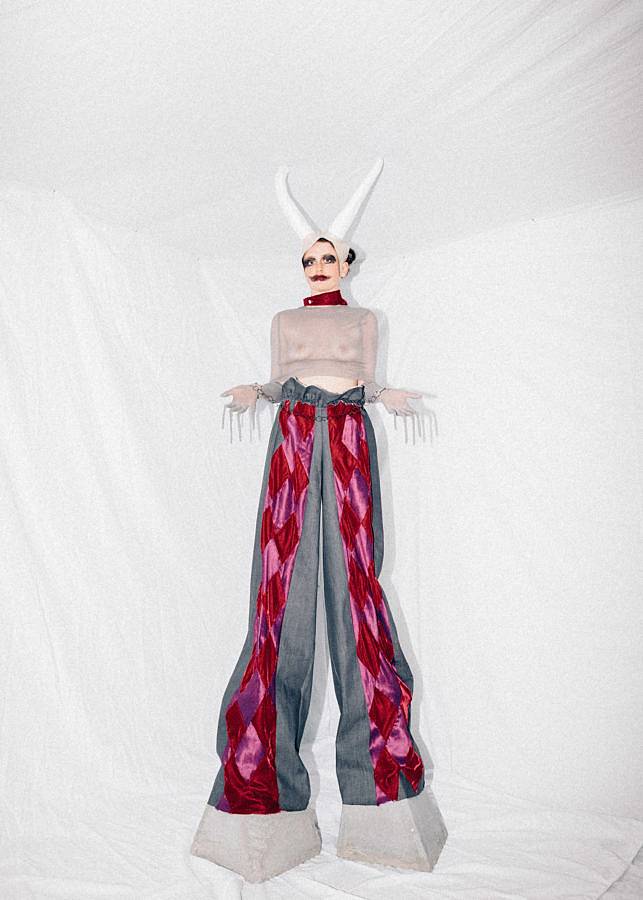
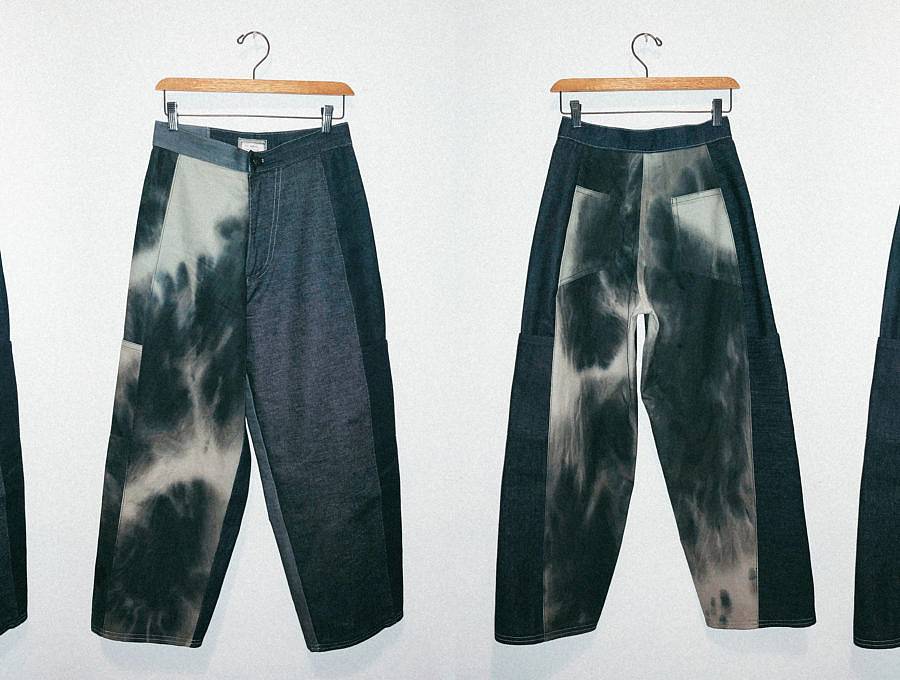
Who would you love to collaborate with?
As I mentioned, I’m starting work on a collaboration with choreographer/dancer Hannah Garner, which I am super excited about. I had been thinking for a while about my work in conjunction with movement and live performance, and I feel like I often unconsciously design for dance when making my more abstract or sculptural garments and installations. I’d love, moving forward, for this connection to be more intentional and follow in the footsteps of a pairing like Leigh Bowery and Michael Clark. If I saw my garments on movement based artists like the duos FlucT or New Noveta, I would be insanely happy.
What does it mean for you to make a garment that’s performative?
For something to be inherently performative, it must be dynamic. The garment needs to have a life on and off the body, or it should force the wearer to move in a certain way. A lot of my wearables are intended to be both sculptural and functional, or some are purely aesthetic with no function at all. There isn’t exactly much functionality to overly long sleeves on a sheer shirt that doesn’t even cover your boobs – you just look like a fairy in a video game, but I think that’s a performance in itself!

